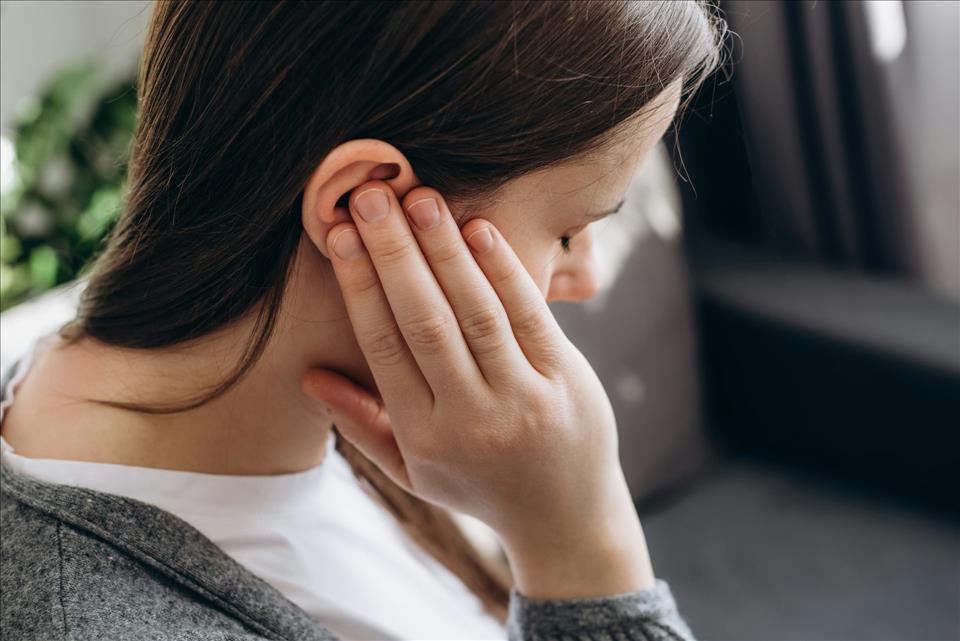
Deaf Women Are Twice As Likely To Experience Domestic Violence. How Perpetrators Weaponise Disability
We know perpetrators have evolved too , adapting their abusive methods to be more pervasive, discreet and sly . Signs that people with disability may be experiencing domestic violence can be even more challenging to detect, which is especially concerning given the recent findings from the Royal Commission into Violence, Abuse, Neglect and Exploitation of People with Disability .
The royal commission found 40% of Australian women with a disability have experienced physical violence after the age of 15 (compared with 26% of women without a disability). However, the risk of domestic violence for people with disabilities varies greatly depending on the type of disability they have.
Research shows Deaf women are twice as likely to experience domestic violence than hearing women. And reports of physical and sexual abuse are up to 20 times greater in Deaf compared to hearing people. As we examine the reasons Deaf victims face a significantly greater risk of domestic violence, criminologists are realising the unique ways it happens.
3 ways deafness is used as a weaponThe dark reality is perpetrators are weaponising their victim's deafness to:
-
enhance their vulnerability
increase barriers to reporting, and
diminish their credibility.
By exploiting their victim's disability, perpetrators increase their power and coercive control. The power dynamic between perpetrator and their Deaf victim is intensified when the perpetrator has the ability to hear. This imbalance of power is described as hearing privilege .
So, how are they doing it?
Perpetrators of domestic violence against Deaf women may damage, destroy or withhold communication equipment such as cochlear implant magnets, hearing aids, and Bluetooth systems to further isolate and control Deaf victims.
By impairing their ability to communicate with others (especially those who are hearing and may not know sign language) this significantly increases the victim's isolation.
Devices can cost thousands of dollars and custom-made equipment can take weeks or even months to be replaced. Therefore, this often results in a prolonged communication barrier.
Assistive technology can take months to replace. People Images/Shutterstock
Given most police are not proficient in Australian Sign Language (Auslan), victims may delay reporting until they can communicate their story on their own terms.
And the loss of their communication equipment may affect a victim's ability to work and fulfil their job responsibilities. Income loss increases financial dependence on their perpetrator. This financial abuse is compounded by the limited employment opportunities available to the Deaf community.
Physical abuseResearch indicates there is a distinct difference in the way perpetrators inflict physical abuse depending on whether the victim is Deaf or hearing.
For hearing victim-survivors, perpetrators often target areas of the body that can be easily covered by clothing to conceal the domestic violence. Perpetrators who abuse Deaf victims are more likely to direct physical violence towards the fingers, hands, wrists and arms. This prevents victims from using sign language, which for many Deaf people is their first and primary language.
This characteristic, however, offers an opportunity to observe the signs of domestic violence against Deaf people, given injuries to the fingers, hands, and wrists are highly visible.
Violence against Deaf women may be more likely to target their hands to prevent signing. James Benjamin/Shutterstock The power of misinterpretation
People who notice these signs of domestic violence can offer support and raise the alarm (if safe to do so for both reporter and victim). But the police have an enormous role to play and must equally be aware of the manipulation tactics perpetrators of abuse againsgt Deaf victims use.
When police respond to a suspected domestic violence incident, they question all parties involved. Research from the United States shows police may rely on a perpetrator who knows sign to interpret for a Deaf victim.
Perversely, this allows the perpetrator to inaccurately interpret the Deaf victim's statements and reframe the narrative to portray themselves as the victim or claim the incident was an accident.
Similarly, perpetrators can misinterpret the information police are conveying to a Deaf victim. They may even falsely label a Deaf victim as intellectually disabled based on their vocalisations or speech, aiming to undermine their credibility and dissuade police from taking the incident or report seriously .
This underscores the importance of police separating parties and interviewing the Deaf victim with the help of a suitably qualified interpreter.
However, even when best practices are followed, there remain significant challenges in accessing qualified interpreters on short notice. According to the 2023 Deaf Census , 77% of respondents reported difficulties in securing qualified interpreters promptly. These experiences have prompted the Deaf community to advocate for addressing the shortage, underpayment and burnout of Auslan interpreters nationwide.
Recognise the signsDisability can be exploited against victims of domestic violence in powerful and disturbing ways. And domestic violence can manifest in unique ways for Deaf victims.
There needs to be greater public awareness and empowerment to support victims. Police protocols for handling domestic violence incidents involving Deaf people should also be thoroughly and regularly reviewed to address issues of hearing privilege and its implications for victim credibility.
For information and advice about family and intimate partner violence contact 1800 RESPECT (1800 737 732). 1800 RESPECT can also be contacted via the National Relay Service . If you or someone you know is in immediate danger, contact 000 or dial 106 for TTY users. Kids Helpline is 1800 55 1800. Men's Referral Service (call 1300 766 491) offers advice and counselling to men looking to change their behaviour.

Legal Disclaimer:
MENAFN provides the
information “as is” without warranty of any kind. We do not accept
any responsibility or liability for the accuracy, content, images,
videos, licenses, completeness, legality, or reliability of the information
contained in this article. If you have any complaints or copyright
issues related to this article, kindly contact the provider above.

















Comments
No comment